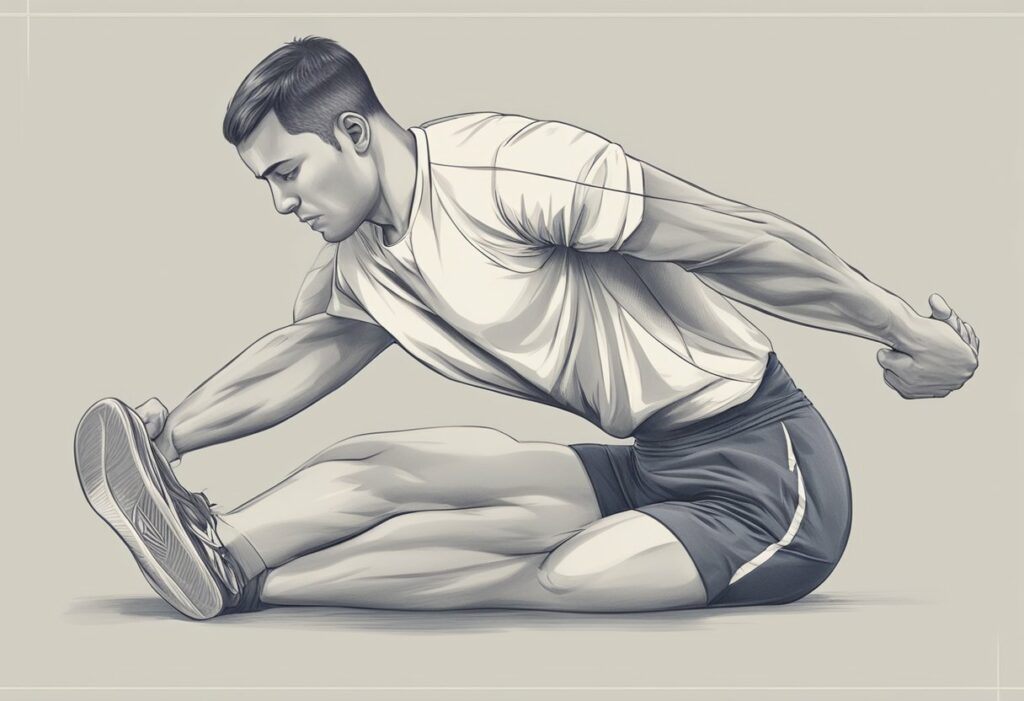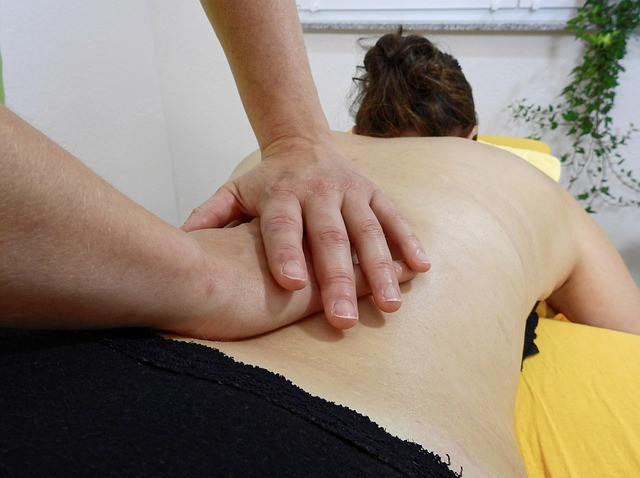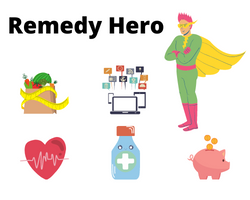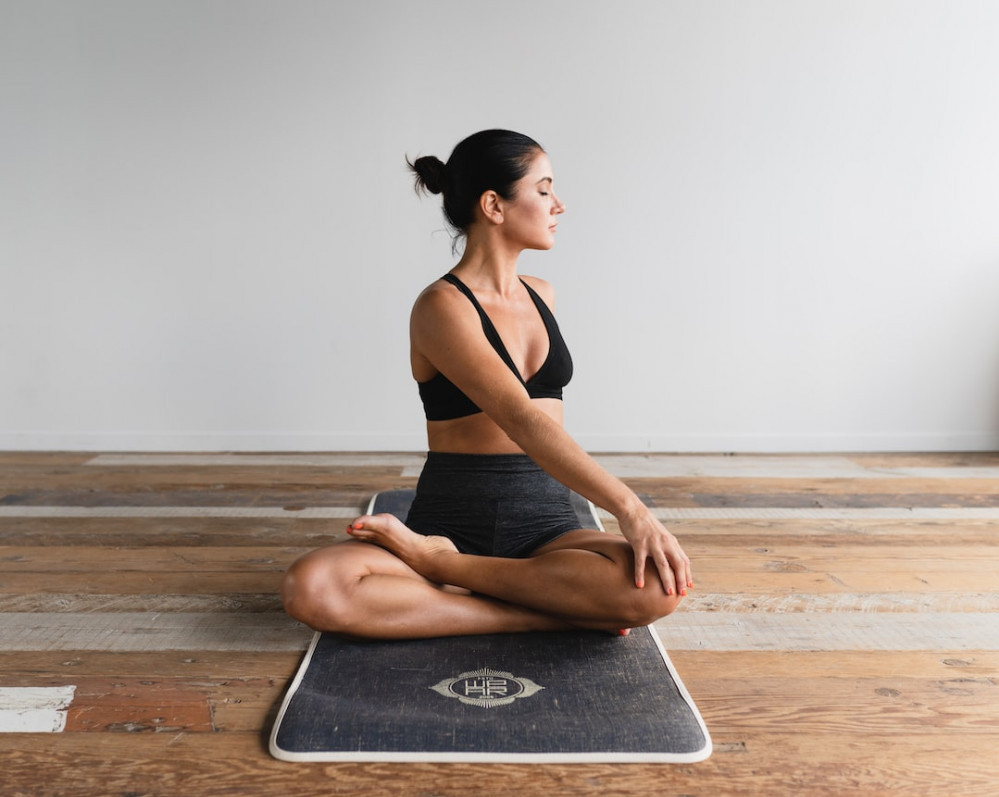Lower back muscle spasms can be a painful and debilitating condition that affects many people. These spasms can occur suddenly and without warning, causing intense pain and discomfort. If you are experiencing lower back muscle spasms, it’s important to understand the causes, symptoms, and effective treatments that can help you find relief.

Lower back muscle spasms are often caused by muscle strain or injury, poor posture, or a sedentary lifestyle. Symptoms may include pain, stiffness, and limited mobility. While lower back muscle spasms can be a frustrating and uncomfortable condition, there are many effective home remedies, exercises, and professional therapies that can help you find relief and improve your quality of life.
Key Takeaways
- Lower back muscle spasms can be caused by a variety of factors, including muscle strain, poor posture, and a sedentary lifestyle.
- Symptoms may include pain, stiffness, and limited mobility.
- Effective home remedies, exercises, and professional therapies can help you find relief and improve your quality of life.
Understanding Lower Back Muscle Spasms
If you’ve ever experienced a lower back muscle spasm, you know how painful and debilitating it can be. Lower back muscle spasms are involuntary contractions of the muscles in the lower back. They can be caused by a variety of factors, including muscle strain, overuse, poor posture, and injury.
Muscles are responsible for movement and stability of the body. When a muscle contracts, it shortens and pulls on the bones to create movement. However, when a muscle contracts involuntarily and uncontrollably, it can cause pain and discomfort. This is what happens during a muscle spasm.
Back spasms can occur in any part of the back, but they are most common in the lower back. The muscles in the lower back are responsible for supporting the weight of the upper body, as well as providing stability and mobility for the hips and legs. When these muscles are overworked or strained, they can become tight and painful.
Muscle spasms can feel like a sudden, sharp pain or a dull ache. They can also cause cramping or a feeling of tightness in the affected muscle. In some cases, muscle spasms can be so severe that they cause the muscles to lock up, making it difficult to move or even stand up straight.
There are several factors that can contribute to the development of lower back muscle spasms. These include:
- Muscle strain or overuse
- Poor posture
- Injury
- Dehydration
- Electrolyte imbalances
- Lack of physical activity
- Stress and tension
To prevent lower back muscle spasms, it is important to maintain good posture, stay hydrated, and engage in regular physical activity. Stretching and strengthening exercises can also help to reduce the risk of muscle strain and overuse.
If you do experience a lower back muscle spasm, there are several things you can do to help relieve the pain and discomfort. These include:
- Resting the affected muscle
- Applying heat or cold therapy
- Taking over-the-counter pain medication
- Gentle stretching and massage
- Seeing a healthcare provider if the pain persists or is severe
By understanding the causes and symptoms of lower back muscle spasms, you can take steps to prevent them from occurring and find relief if they do occur.
Common Causes of Lower Back Spasms
Lower back spasms can be caused by a variety of factors, including age, injury, poor posture, medical conditions, physical activity, degenerative disc disease, and underlying conditions. Here are some common causes of lower back spasms:
Spinal Stenosis
Spinal stenosis is a condition that causes the spinal canal to narrow, putting pressure on the spinal cord and nerves. This can cause lower back pain and muscle spasms. Spinal stenosis is most commonly caused by osteoarthritis and can be treated with medication, physical therapy, and surgery.
Poor Posture
Poor posture can cause lower back spasms by putting pressure on the muscles and joints in the lower back. Slouching or sitting for long periods of time can cause muscle imbalances and lead to lower back pain and spasms. Maintaining good posture and taking frequent breaks to stretch can help prevent lower back spasms.
Medical Conditions
Medical conditions such as fibromyalgia, spondylolisthesis, ankylosing spondylitis, and herniated discs can cause lower back spasms. These conditions can be treated with medication, physical therapy, and in some cases, surgery.
Physical Activity
Physical activity such as heavy lifting, twisting, or bending can cause lower back spasms. It is important to use proper form and technique when lifting heavy objects to prevent injury and lower back spasms.
Degenerative Disc Disease
Degenerative disc disease is a condition that causes the discs in the spine to break down over time. This can cause lower back pain and muscle spasms. Treatment for degenerative disc disease may include medication, physical therapy, and in some cases, surgery.
Underlying Conditions
Underlying conditions such as arthritis, stress, anxiety, dehydration, gallstones, and cauda equina syndrome can cause lower back spasms. Treatment for these conditions may vary depending on the underlying cause.
By understanding the common causes of lower back spasms, you can take steps to prevent them and seek appropriate treatment if necessary.
Symptoms and Diagnosis

Lower back muscle spasms can cause a range of symptoms that can vary in intensity and duration. Some common symptoms of lower back muscle spasms include:
- Sharp pain in the lower back that may radiate down to the legs
- Muscle stiffness or tightness in the lower back
- Discomfort when standing or sitting for long periods
- Numbness or tingling in the legs
- Sciatic nerve pain, which can cause shooting pain down the leg
If you are experiencing any of these symptoms, it is important to seek a proper diagnosis from a healthcare professional. Your doctor may perform a physical exam and ask about your medical history to help determine the cause of your lower back muscle spasms.
In some cases, imaging tests such as X-rays, CT scans, or MRI scans may be necessary to rule out other underlying conditions that may be causing your symptoms. These tests can help your doctor identify any structural issues in your spine that may be contributing to your muscle spasms.
It is important to note that while lower back muscle spasms can be painful and uncomfortable, they are usually not a sign of a serious underlying condition. In most cases, they can be effectively treated with a combination of rest, gentle stretching, and over-the-counter pain relievers. However, if your symptoms persist or worsen over time, it is important to seek medical attention to rule out any more serious conditions.
Effective Home Remedies
If you are experiencing lower back muscle spasms, there are several effective home remedies you can try to alleviate the discomfort. Here are some options:
Ice and Heat Therapy
Both ice and heat can be effective in reducing muscle spasms. Applying ice to the affected area can help reduce inflammation and numb the pain, while heat can help increase blood flow and promote healing. Some people find that alternating between the two can be particularly effective.
Warm Bath or Shower
Taking a warm bath or shower can help relax your muscles and reduce tension in your lower back. Make sure the water is not too hot, as this can cause further inflammation.
Hydration
Staying hydrated is important for overall muscle health, and can also help alleviate back spasms. Make sure you are drinking plenty of water throughout the day.
Gentle stretching can help alleviate muscle tension and reduce the likelihood of future spasms. Some effective stretches for lower back spasms include the knee-to-chest stretch, the cat-cow stretch, and the child’s pose.
Massage
Massaging the affected area can help increase blood flow and reduce muscle tension. You can try massaging the area yourself, or consider visiting a professional massage therapist.
Over-the-Counter Medication
Over-the-counter pain relievers such as ibuprofen or acetaminophen can help alleviate the discomfort associated with lower back muscle spasms. However, it is important to follow the recommended dosage and not rely on medication as a long-term solution.
By trying these home remedies, you may find relief from lower back muscle spasms and be able to resume your daily activities with less discomfort.
Exercises and Stretches for Relief
When it comes to relief for lower back muscle spasms, exercises and stretches can be very helpful. These activities can help to stretch and strengthen the muscles in your lower back, which can help to reduce the frequency and intensity of muscle spasms.
One of the most effective exercises for lower back muscle spasms is walking. Walking is a low-impact exercise that can help to stretch and strengthen the muscles in your lower back. Walking can also help to improve your posture, which can help to reduce the strain on your lower back muscles.
Yoga is another great option for relieving lower back muscle spasms. Many yoga poses can help to stretch and strengthen the muscles in your lower back. Some of the best yoga poses for lower back muscle spasms include the downward dog, the child’s pose, and the cat-cow stretch.
Stretching is also important for relieving lower back muscle spasms. Stretching can help to improve your flexibility and range of motion, which can help to reduce the strain on your lower back muscles. Some of the best stretches for lower back muscle spasms include the knee-to-chest stretch, the hamstring stretch, and the standing hamstring stretch.
Using a foam roller can also be very helpful for relieving lower back muscle spasms. Foam rolling can help to massage and stretch the muscles in your lower back, which can help to reduce tension and improve circulation.
In summary, exercises and stretches can be very helpful for relieving lower back muscle spasms. Walking, yoga, stretching, and foam rolling are all great options to consider. By incorporating these activities into your routine, you can help to reduce the frequency and intensity of muscle spasms in your lower back.
Professional Therapies and Treatments

If you’re experiencing persistent lower back muscle spasms, you may want to consider seeking professional treatment. Here are some options to explore:
Physical therapy
Physical therapy can be an effective way to relieve lower back muscle spasms. A physical therapist can help you develop a personalized exercise and stretching routine to strengthen your muscles and improve your flexibility. They may also use techniques like massage, heat therapy, and ultrasound to help alleviate your symptoms.
Medication
Over-the-counter pain relievers like ibuprofen and acetaminophen can help reduce inflammation and alleviate pain. If your muscle spasms are severe, your doctor may prescribe muscle relaxants to help ease your symptoms.
Massage
Massage therapy can help relieve muscle tension and reduce pain. A skilled massage therapist can target the affected muscles and use techniques like deep tissue massage and trigger point therapy to help alleviate your symptoms.
TENS
Transcutaneous electrical nerve stimulation (TENS) is a non-invasive treatment that uses electrical impulses to stimulate the nerves and reduce pain. TENS can be an effective way to relieve lower back muscle spasms, and it can be used in conjunction with other treatments like physical therapy and medication.
Injections
In some cases, injections may be necessary to relieve lower back muscle spasms. Your doctor may recommend corticosteroid injections to reduce inflammation and alleviate pain. In more severe cases, they may recommend nerve block injections to help alleviate your symptoms.
Chiropractic care
Chiropractic care involves spinal manipulation to help realign the spine and alleviate pain. A chiropractor can help relieve lower back muscle spasms by manipulating the affected area and using techniques like massage and stretching to help alleviate your symptoms.
Rehabilitation
If your lower back muscle spasms are caused by an injury or accident, rehabilitation may be necessary to help you recover. A physical therapist can help you develop a personalized rehabilitation program to help you regain your strength and mobility.
Acupuncture
Acupuncture involves inserting thin needles into specific points on the body to help alleviate pain and reduce inflammation. This alternative therapy can be an effective way to relieve lower back muscle spasms, and it can be used in conjunction with other treatments like medication and physical therapy.
Tai chi
Tai chi is a low-impact exercise that involves slow, flowing movements to help improve your balance, flexibility, and strength. This gentle exercise can be an effective way to relieve lower back muscle spasms, and it can be practiced on its own or in conjunction with other treatments like physical therapy and medication.
Remember to consult with your doctor before starting any new treatment or therapy. They can help you determine which approach is best for you based on your symptoms and medical history.
Role of Posture and Lifestyle
Maintaining good posture throughout the day can help prevent lower back muscle spasms. Poor posture can put unnecessary strain on your back muscles, leading to pain and discomfort. When sitting, make sure to sit up straight with your shoulders back and your feet flat on the ground. Avoid crossing your legs or slouching forward. When standing, distribute your weight evenly on both feet and avoid locking your knees.
Bending and lifting heavy objects can also cause lower back muscle spasms. When lifting, make sure to bend your knees and keep your back straight. Avoid twisting your back while lifting heavy objects.
A sedentary lifestyle can also contribute to lower back muscle spasms. Make sure to take frequent breaks from sitting and move around every 30 minutes to an hour. Incorporating regular exercise into your routine can also help prevent muscle fatigue and reduce the risk of muscle spasms.
In summary, maintaining good posture, proper bending and lifting techniques, and avoiding a sedentary lifestyle can all help prevent lower back muscle spasms. Incorporating regular exercise into your routine can also help strengthen your back muscles and reduce the risk of muscle spasms.
Medications for Lower Back Spasms

If you are experiencing lower back spasms, your doctor may recommend medications to help relieve the pain and discomfort. There are several types of medications that can be used to treat lower back spasms, including muscle relaxants, pain medication, and nonsteroidal anti-inflammatory drugs (NSAIDs).
Muscle relaxants are a type of medication that can help reduce muscle spasms and stiffness. They work by blocking the nerve impulses that cause muscle contractions. Common muscle relaxants include baclofen, cyclobenzaprine, and tizanidine. These medications can cause drowsiness and dizziness, so it is important to avoid driving or operating heavy machinery while taking them.
Pain medication, such as acetaminophen or opioids, can be used to help manage the pain associated with lower back spasms. However, opioids should only be used as a last resort due to their potential for addiction and other side effects.
Nonsteroidal anti-inflammatory drugs (NSAIDs), such as ibuprofen or naproxen, can help reduce inflammation and relieve pain. They work by blocking the production of prostaglandins, which are chemicals that contribute to pain and inflammation. NSAIDs can cause stomach upset and other side effects, so it is important to take them as directed and talk to your doctor if you experience any adverse effects.
It is important to note that medications should only be used as part of a comprehensive treatment plan for lower back spasms. Other treatments, such as physical therapy, stretching, and massage, may also be recommended to help relieve your symptoms. Talk to your doctor to determine the best course of treatment for your specific condition.
When to Consult a Healthcare Provider
Lower back muscle spasms can be a painful and uncomfortable experience, but most cases can be treated with at-home remedies like ice, heat, and stretching. However, in some situations, it may be necessary to consult a healthcare provider for further evaluation and treatment.
Here are some situations where you should consider consulting a healthcare provider:
- If your lower back muscle spasms are severe and do not improve with at-home treatments.
- If your lower back muscle spasms are accompanied by other symptoms such as numbness, tingling, or weakness in your legs.
- If your lower back muscle spasms are caused by a recent injury or trauma.
- If you have a history of back problems or spinal conditions.
- If you are experiencing lower back muscle spasms for the first time and are unsure of the cause.
Your healthcare provider may recommend further diagnostic tests such as X-rays or MRI scans to determine the underlying cause of your lower back muscle spasms. They may also prescribe medication to help relieve pain and muscle spasms.
It’s important to seek medical attention if you are experiencing any of these symptoms to prevent further complications and ensure proper treatment. Remember to always consult a healthcare provider before starting any new treatment or exercise program for your lower back muscle spasms.
Conservative Treatment Options for Lower Back Muscle Spasms
If you are experiencing lower back muscle spasms, there are several conservative treatment options that can help relieve your symptoms. Here are some of the most effective options:
Ice Packs and Heating Pads
Ice packs and heating pads can be used to help alleviate lower back muscle spasms. Applying an ice pack to the affected area for 20 minutes at a time, several times a day can help reduce inflammation and numb the area. Similarly, applying a heating pad to the affected area for 20 minutes at a time, several times a day can help increase blood flow and relax the muscles.
Anti-Inflammatory Medications and Muscle Relaxants
Anti-inflammatory medications such as ibuprofen or naproxen can help reduce inflammation and alleviate pain associated with lower back muscle spasms. Additionally, muscle relaxants such as cyclobenzaprine or baclofen can help relax the muscles and reduce spasms.
Heat Therapy and Physical Therapy
Heat therapy can help alleviate lower back muscle spasms by increasing blood flow and relaxing the muscles. Physical therapy can also be helpful in treating lower back muscle spasms by providing exercises and stretches that can help strengthen the muscles and improve flexibility.
Exercise Program to Strengthen Core Abdominal Muscles
An exercise program that focuses on strengthening the core abdominal muscles can help prevent lower back muscle spasms from occurring in the first place. Exercises such as planks, bridges, and pelvic tilts can help strengthen the muscles that support the lower back.
Other Treatment Options for Lower Back Muscle Spasms
Other treatment options for lower back muscle spasms include massage therapy, chiropractic care, and acupuncture. While these treatments may not be as effective as the options listed above, they can still provide some relief for your symptoms.
Remember, if your lower back muscle spasms persist or worsen despite conservative treatment options, it is important to seek medical attention from a healthcare professional.
Frequently Asked Questions
What causes back spasms on right side?
Back spasms on the right side can be caused by various factors, including poor posture, muscle strain, injury, or underlying medical conditions. Poor posture and muscle strain are the most common causes of back spasms. Muscle strain can occur due to overuse, sudden movements, or lifting heavy objects improperly. Underlying medical conditions, such as herniated discs, spinal stenosis, or arthritis, can also cause back spasms.
Stretches for back spasms?
Stretching can help alleviate back spasms and prevent them from occurring. Some effective stretches for back spasms include the knee-to-chest stretch, the seated spinal twist, and the cat-cow stretch. These stretches can help loosen up tight muscles and improve flexibility. It is essential to stretch gently and avoid overstretching, which can cause further injury.
Middle back spasms: What are they and how to relieve them?
Middle back spasms are involuntary contractions of the muscles in the middle of the back. They can be caused by poor posture, muscle strain, or underlying medical conditions. To relieve middle back spasms, you can try applying heat or cold therapy, taking over-the-counter pain relievers, or doing gentle stretches. It is also essential to maintain good posture and avoid activities that can strain the back muscles.
Muscle spasm in upper back: How to alleviate the pain?
Muscle spasms in the upper back can be caused by poor posture, muscle strain, or underlying medical conditions. To alleviate the pain, you can try applying heat or cold therapy, taking over-the-counter pain relievers, or doing gentle stretches. It is also essential to maintain good posture and avoid activities that can strain the back muscles. If the pain persists, it is advisable to seek medical attention.
How to release a locked back?
A locked back occurs when the muscles in the back become stiff and difficult to move. To release a locked back, you can try applying heat or cold therapy, taking over-the-counter pain relievers, or doing gentle stretches. It is also essential to maintain good posture and avoid activities that can strain the back muscles. If the pain persists, it is advisable to seek medical attention.
Is walking good for back spasms?
Yes, walking is an excellent low-impact exercise that can help alleviate back spasms and prevent them from occurring. Walking can help improve circulation, strengthen the muscles, and improve flexibility. It is essential to start slowly and gradually increase the duration and intensity of the walk. It is also important to maintain good posture while walking and wear comfortable shoes that provide good support.









